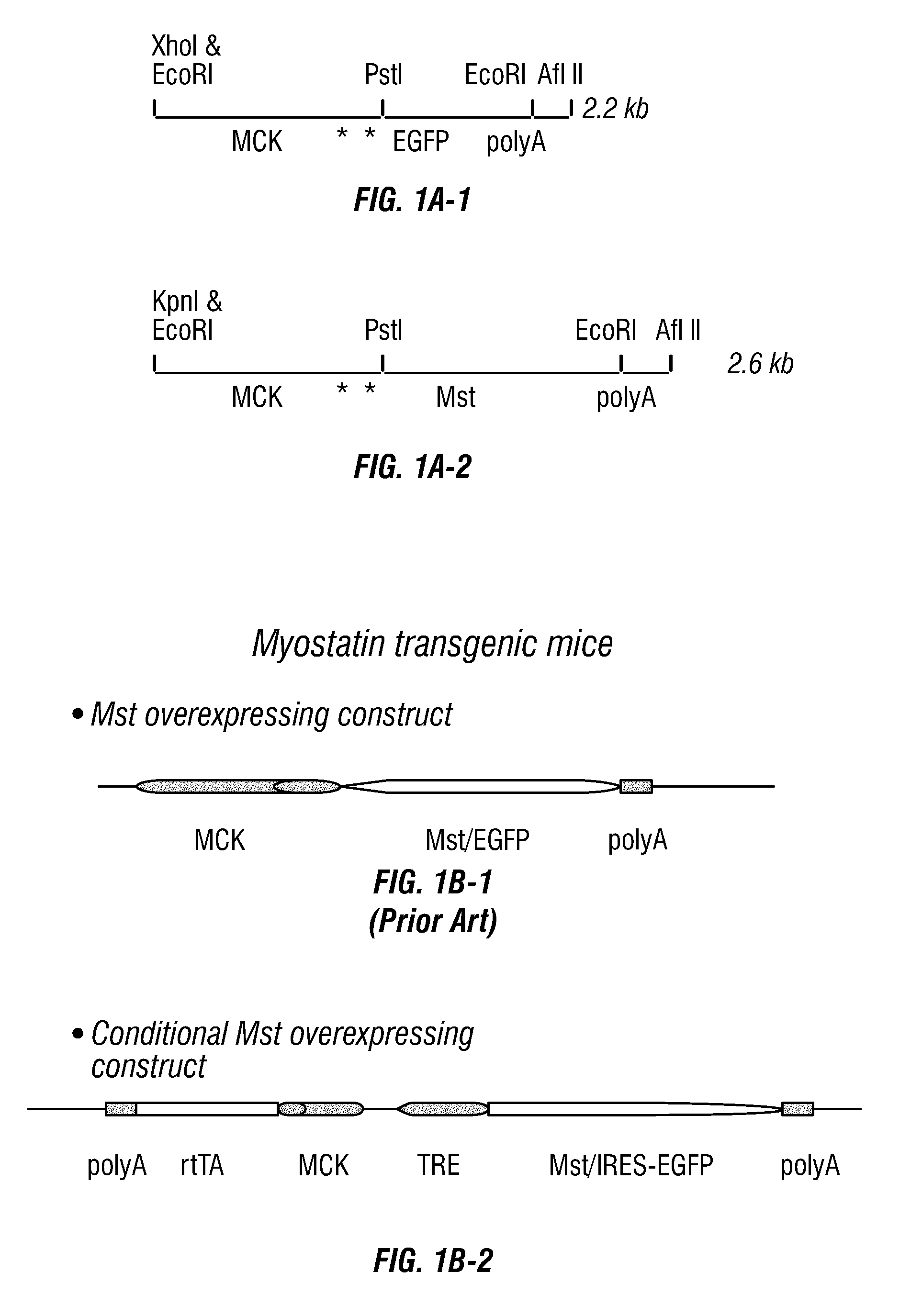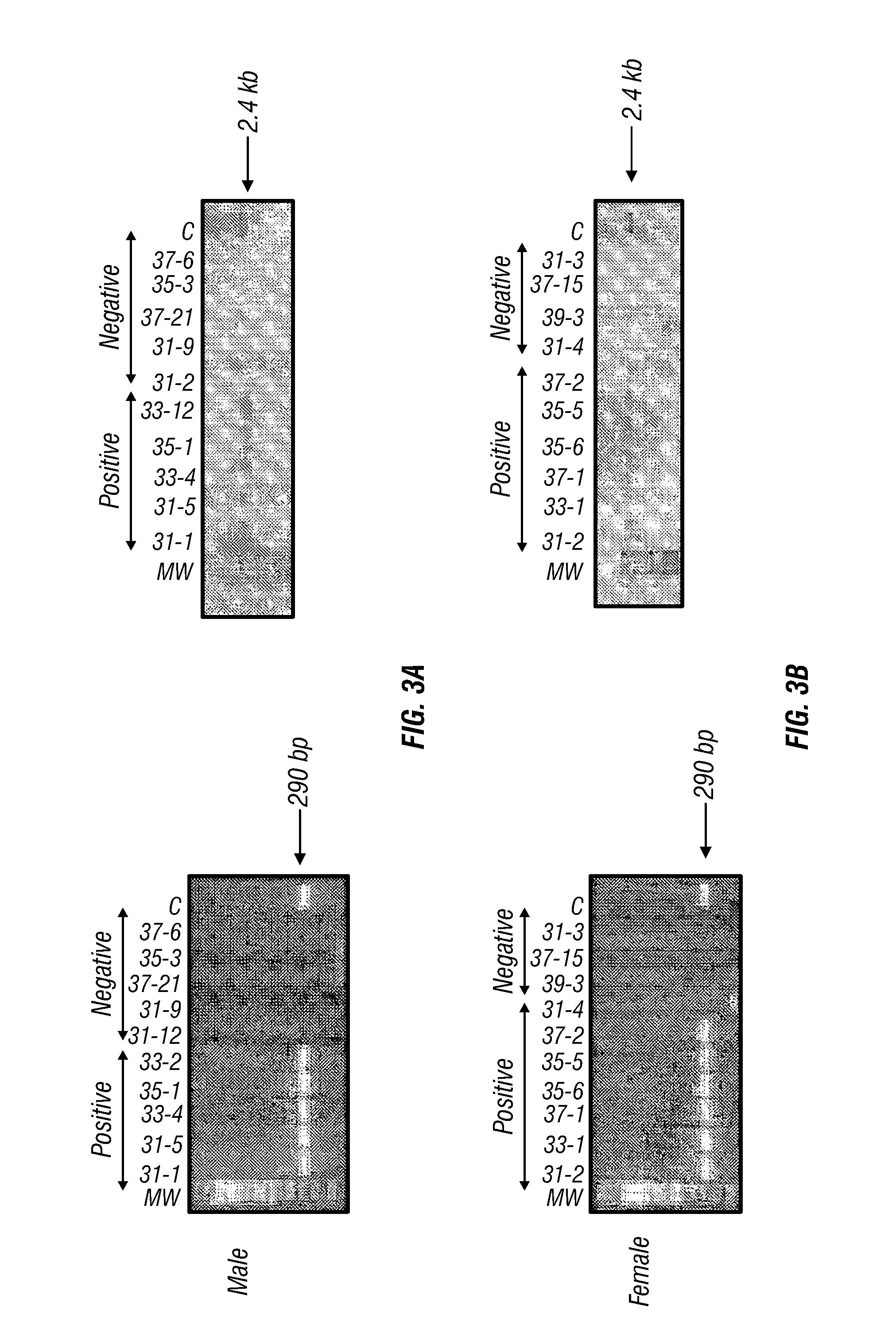Conditional Mst Overexpressing Construct and Conditional Myostatin Overexpressing Transgenic Mouse
a transgenic mouse and construct technology, applied in the field of molecular genetics, can solve the problems of in vivo regulation of skeletal muscle homeostasis and its pathology, inability to fully integrate, and wasting muscle, and achieve the effects of increasing mst expression, reducing muscle mass, and reducing muscle strength
- Summary
- Abstract
- Description
- Claims
- Application Information
AI Technical Summary
Benefits of technology
Problems solved by technology
Method used
Image
Examples
embodiment 6
7. A conditional monocistronic construct of embodiment 6 where the response construct lacks a HA tag on Mst sequence.
8 A conditional bicistronic myostatin expression construct comprising a construct of any of claims 1-4 lacking an IRES / EGFP sequence downstream of Mst sequence.
embodiment 8
9. A conditional monocistronic construct of embodiment 8 where the response construct has no IRES / EGFP sequence.
10. A conditional bicistronic myostatin expression construct comprising a construct of any of embodiments 1-4 lacking BFP fusion to the rtTA sequence.
embodiment 10
11. A conditional monocistronic construct of embodiment 10 wherein the regulatory construct lacks a BFP fusion at the 3′ end of the rtTA sequence.
12. A construct of any of embodiments 1-11 wherein said construct comprises a plasmid.
13. A method of producing a transgenic non-human animal comprising introducing the construct of any of embodiments 1-11 into a non-human animal.
14. A transgenic non-human animal for conditionally overexpressing Mst comprising cells comprising a construct of any of embodiments 1-11.
15. A transgenic non-human animal produced by: (a) crossing a first transgenic non-human animal comprising a first (regulatory) construct that expresses rtTA operably linked to promoter MCK or MCK-3E with a second non-human animal comprising a second (response) construct comprising Mst or Mst cDNA operably linked to a promoter TRE and (b) selecting from the first generation offspring a transgenic non-human animal having a genome comprising both the first regulatory construct and...
PUM
| Property | Measurement | Unit |
|---|---|---|
| Fraction | aaaaa | aaaaa |
| Fraction | aaaaa | aaaaa |
| Fraction | aaaaa | aaaaa |
Abstract
Description
Claims
Application Information
 Login to View More
Login to View More - R&D
- Intellectual Property
- Life Sciences
- Materials
- Tech Scout
- Unparalleled Data Quality
- Higher Quality Content
- 60% Fewer Hallucinations
Browse by: Latest US Patents, China's latest patents, Technical Efficacy Thesaurus, Application Domain, Technology Topic, Popular Technical Reports.
© 2025 PatSnap. All rights reserved.Legal|Privacy policy|Modern Slavery Act Transparency Statement|Sitemap|About US| Contact US: help@patsnap.com



